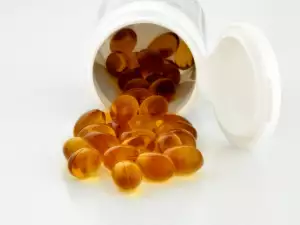Cobalt (Co) is an essential trace element, which is mainly associated with hematopoiesis in the body. The formation of hemoglobin and red blood cells is activated through cobalt trace elements. Cobalt can not perform this function if the body does not have enough copper. If the body lacks copper, and iron, cobalt can not activate the formation of hemoglobin and red blood cells. Like copper, cobalt favors good maturation of reticulocytes to erythrocytes.
The amount of cobalt in the body is only 1-2 mg. The majority of it is located in the pancreas, kidneys and muscles. The daily dose of cobalt necessary for an adult is about 0.1-0.2 mg.
Cobalt is a component of vitamin B12. Cobalt is of great importance as a starting material in the synthesis of endogenous vitamin B12 known as cyanocobalamin. Vitamin B12 is available for the body when taken with food, as well as in the synthesis of microbial gut in the presence of cobalt in food products.
Cobalt is a chemical element. Its atomic number is the 27th in the periodic table. Cobalt is a hard and shiny gray-blue metal. The name of the chemical element Cobalt comes from the German word "Kobold", which translates as "spirit" or "dwarf". Ore containing cobalt mineral is named by miners in the name of Kobold. Ancient Norwegians who engaged in mining, attributed poisoning with silver to casting from an evil spirit that makes his bad jokes with them.

It is assumed that the name of the evil spirit has the same Greek root "kobalos" which translates as "smoke". Beliefs of German miners came from the fact that when heating cobalt minerals containing arsenic a poison gas - arsenic oxide is released. In 1735, the Swedish mineralogist Georg Brandt after prolonged attempts managed to separate the until then unknown metal which he named Cobalt from the ore. Mineralogy found that compounds of cobalt are located in blue stained glass.
Cobalt is considered a relatively rare metal, which is mostly contained in nickel ores. Cobalt is extracted after the first ore is enriched and is obtained in the resulting concentrate. It is treated with sulfuric acid or ammonia to extract the metal. Cobalt is mainly spent on obtaining alloys and increases the thermal resistance of the steel. Furthermore, cobalt is treated as a pigment in the manufacture of some dyes.
Benefits of cobalt
There are lots of benefits to the human body from cobalt. It affects the function of the pancreas insulating apparatus for the formation of insulin. Cobalt affects bone and intestinal phosphatase and the general metabolism. One of the beneficial effects of cobalt also prevent and delay the development of anemia. Shortage of cobalt in the human body puts us at risk of developing anemic conditions. Cobalt is found in small concentrations in foods, but with a properly balanced diet, the needs of people for it are fully covered.
Cobalt affects hematopoiesis, is involved in the metabolism and stimulates the formation of red blood cells and hemoglobin in the blood. It participates in the synthesis of DNA and amino acids, supports the immune and nervous system. Its action is very important for the functioning of the cells and the development of erythrocytes.
Cobalt inhibits the development of cancer and is important for athletes who are subjected to daily and prolonged exercise.
Foods rich in cobalt
The main enemies of cobalt are nicotine, alcohol, and vegetarianism, which may cause a shortage of certain components. This deficiency is very rare, but there is a real danger of it. Cobalt comes from fish, seafood, oysters, shellfish, meat, kidney, liver, eggs and other animal products.
Shortness of cobalt
As seen, the risk of cobalt deficiency is biggest for vegetarians, smokers and regular alcohol users. Cobalt deficiency can lead to anemia, circulatory problems and endocrine system. Other reasons for the shortage of cobalt can be chronic diseases of the digestive system. Most often, these are gastritis and ulcers.
Shortage of cobalt has the following symptoms: headache, anemia, irritability, and other events related to the disorder of the central nervous system.
Overdose with cobalt
When the quantity of this item is greater than necessary, severe cardiomyopathy and explicit heart failure can occur.
















Comments